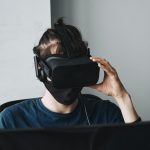‘Up to 10% of the population is affected by a Specified Learning Disability (SLD), involving the likes of dyslexia, autism, dyscalculia. This translates to 2-3 kids per classroom being affected by some kind of learning disability. Children are also usually affected by more than one learning disability at a time.’
Quote taken from an article published by academics at the London’s UCL and Goldsmiths college.
Learning disorders are categorised by a learning deficiency, making it hard for a person to process information, which inhibits them from learning and retaining a new skill. This inability hinders the ability to read, write, process verbal and non-verbal information as well as mathematical skills. Learning disabilities are caused by numerous factors. Some of these involve family history and genetics, environmental factors, trauma, prenatal and neonatal risks, etc.
Virtual reality has defied expectations and taken over the training and learning world with its immersive nature which is helping children with learning disabilities also. It’s ability of encompassing the user in a 360° life like environment makes VR a go towards easy and engaging learning. In counter to more traditional styles of learning that involve e-learning and classroom learning, Virtual Reality learning is being valued especially for encompassing a highly engaging teaching environment to students with varying learning disabilities.
Multi-sensory VR for taking the load off reading
For students who have difficulty comprehending heavy text based lessons, virtual reality lessons take the load off. By being immersed in life-like scenarios that engage and heighten all the senses of the student, virtual simulations can deliver lessons with equally good or even better outcomes for the student. Since the body and brain remembers VR simulations as real life experiences, this is especially beneficial for students who are facing difficulties like autism or dyslexia. The flexible nature of virtual environments can bring broadened learning outcomes for different students. Virtual reality simulations fully immerse a user and is known for its ability to have users more focused which can help students who find it hard to be fully engaged in difficult topics of study.
Virtual Reality for enhancing social skills
One of the more important soft skills VR delivers to its users is social skills. With simulations helping students to interact with others around them, especially for students on the spectrum, as they can interact, navigate and learn from their mistakes in a safe environment. In effect, VR provides them the ability to be confident in their skills when they encounter such situations in real life.
VR to compliment school learnings
Virtual reality cannot replace traditional and essentially important classroom learning, which is why it can be used to compliment it. The virtual reality lessons for children can be an added excitement that helps students overcome feelings of fear and reluctance to learn. With skills like confidence and communication learnt through VR simulations, students can translate learnings into when they are faced with harder topics. Educational games can help unload a lot of the pressure faced by students in the learning scene. Virtual Reality’s immersive nature can encourage students to grasp lessons and implement tactics to overcome difficulties in real life. With reading, writing, speaking and listening, all skills can be undertaken by the student and practiced in the virtual environment. VR is rapidly being integrated as an essential learning tool in schools for all levels of study. Virtual reality can also give students an outlet to express their artistic skills such as drawing, painting etc. Such practices can be monitored by the teachers and professionals, which is a form of ‘art therapy’. This creative practice of understanding and dealing with emotions through using art as a creative outlet is being popularised and can be useful in giving students with learning disabilities a sense of relaxation as they virtually ‘escape’ from the real world. It makes a whole lot of sense why the education system has already made efforts to implement VR up until tertiary education level to provide its students with ease to grasp the study materials. At Yes VR we are motivated towards bringing quality simulations to the world of VR learning. Think of us for your VR learning solutions to get the best of the industry’s 360° virtual simulations relevant to your individual needs.
Written by Simran Singh
Similar articles to check out:







